Since the Bush Administration released its aviation financing
reform proposal on February 14, there has been a significant amount
of misinformed rhetoric about the potential impact of the proposal
on the U.S. general aviation (GA) community. The FAA is aware that
GA in the US is more vibrant than anywhere else in the world, and
GA -- from corporate jets to small personal aircraft -- plays a
vital role in the US economy.
The FAA is proud to help support that role, and strongly
believes it is in the national interest to have a strong GA
community. In developing our cost-based financing proposal, we
balanced numerous interests, including feedback from the GA
community, in an attempt to avoid overly burdening any one segment
of the industry.
This paper clarifies some key aspects of the reform proposal
with respect to the GA community.
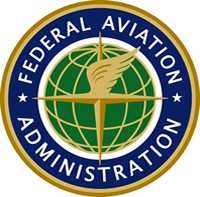 Myth: The proposal forces GA
to pay more than its fair share of the FAA’s costs.
Myth: The proposal forces GA
to pay more than its fair share of the FAA’s costs.
Facts:
The Administration’s proposal is based on an air traffic
cost allocation that assigns the costs of over 600 different line
items to users based on who drives the cost. This allocation is
simple and transparent, but also extremely thorough. It uses the
most granular and comprehensive cost and activity information the
FAA has ever had.
The allocation found that GA drives approximately 16 percent of
the costs of air traffic services. Nearly 10 percent is related to
high performance GA aircraft such as corporate jets, while 6
percent is related to piston GA aircraft. These figures do not
include flight service stations, which largely serve the GA
community.
In contrast, GA currently contributes just over 3 percent of the
taxes that flow into the Airport and Airway Trust Fund.
The proposal would increase GA’s share of the user taxes
and fees to 11 percent — with 10 percent coming from jets and
other high performance aircraft and only 1 percent from piston
users. While this is higher than GA’s current share, it is
still well below their share of the costs. This is because the
Administration’s proposal would have the general fund pay for
the costs of towers at airports with less than 100,000 commercial
enplanements. These towers primarily serve the GA community.
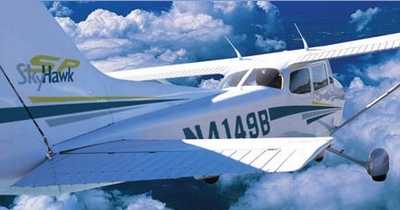
Myth: The FAA’s cost allocation assumes that “a
blip is a blip” and doesn’t account for airlines
driving the costs through peak usage, while GA is only a marginal
user.
Facts:
The cost allocation recognizes that a piston “blip”
does not drive the same costs as a jet “blip.” It
also recognizes that a flight into an airport like Cheyenne,
Wyoming drives very different costs from a flight into Chicago
O’Hare.
However, the cost allocation does assume that a corporate jet
flying the exact same flight as an airline jet uses the same
services and drives the same costs.
The allocation divides air traffic services into six different
categories with different cost structures (including three
different categories of terminals). This methodology recognizes
that busy facilities are more expensive and only assigns costs for
those facilities to those who use them. For instance, the thirty
large hubs, where commercial turbine activity accounts for over 92
percent of the operations, have an average cost per operation
nearly 50 percent higher than our middle group of terminals and
over five times as high as our low activity towers.
The allocation also assigned 100 percent of the costs of an
approach control facility to the largest terminal category it
serves. For instance, all of the costs associated with the New York
TRACON went into the large hub group, in recognition that Newark,
LaGuardia and Kennedy drive most of the TRACON costs. GA flights to
Teterboro may use TRACON services, but are not allocated any of the
costs.
Each cost item is allocated between the two principal users: 1)
High performance / turbine and 2) Piston/Helicopter. In virtually
all cases (except for the smallest towers), piston users are
considered marginal and therefore are not assigned the fixed costs
of the system.
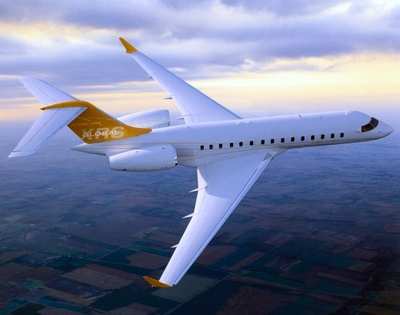
Myth: The proposed tax increases will ruin general aviation in
the United States.
Facts:
We listened to the GA community’s input that fuel taxes
were the most efficient and least disruptive way to recover costs
from GA users.
It is important to keep the proposed fuel tax increase in
perspective. Federal fuel taxes currently average approximately 1.5
percent of the total operating cost of a GA plane.
 Under the
Administration’s proposal the average federal tax burden
would rise to just under 5 percent of operating costs. (This is
similar to the federal fuel tax as a percentage of operating costs
for automobiles.) In other words, total operating costs would
increase roughly 3 percent.
Under the
Administration’s proposal the average federal tax burden
would rise to just under 5 percent of operating costs. (This is
similar to the federal fuel tax as a percentage of operating costs
for automobiles.) In other words, total operating costs would
increase roughly 3 percent.
The last adjustment to the GA fuel tax rate was in 1990. Simply
adjusting the fuel tax rates for inflation would result in rates of
roughly $0.36 per gallon for jet fuel and $0.32 per gallon for
aviation gasoline. However, these rates would still not cover the
air traffic control costs that GA activity drives.
Fuel prices over the last five years have increased by much more
than the proposed tax changes. While any increase to the price of
flying has an impact on demand, the GA community is thriving
despite the recent fuel price increases. According to data from the
General Aviation Manufacturers Association, 2006 was a record year
for GA aircraft orders. Aircraft shipments and billings increased
over 35 percent between 2001 and 2006.
Under our proposal, we estimate that a large corporate jet
flying from Teterboro to Tampa would see an increased cost of
approximately $600 — compared to a total operating cost of
roughly $13,000. This increase includes an estimated user fee of
$79 for landing at Tampa International; if the flight uses an
alternate airport in the Tampa area, no user fees would apply to
the flight. Under the current system, this GA jet currently
contributes approximately $236 in taxes to the system, while a
150-seat airline jet flying from New York to Tampa contributes
nearly $1,300.
A typical small GA piston aircraft would see an increase of
roughly $4 per hour, or $500 per aircraft over the course of a
year. This increase should not stifle general aviation activity. No
user fees would apply if the flight does not land at or depart from
one of the 30 large hub airports.
The bottom line is that under the current system, the family of
four taking a budget vacation is subsidizing the CEOs flying on a
corporate jet. Reducing the current GA subsidy may result in some
rationalization of behavior, but we do not believe the changes will
be dramatic.
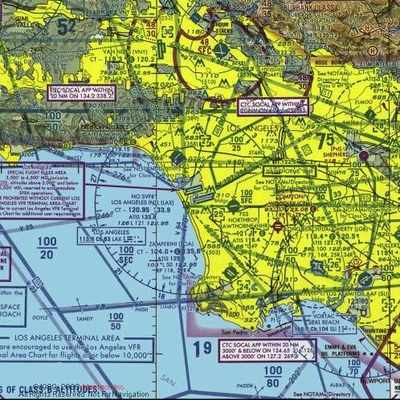
Myth: The proposal could force GA to pay user fees for terminal
airspace.
Facts:
The Administration’s proposal does not include any user
fees for GA to fly through Class B or any other type of airspace.
Based on stakeholder feedback, we recognize that some of the
legislative language may be less clear than we had intended on this
point. The FAA would be amenable to suggestions on how to clarify
this language to align with the intent.
User fees would only apply to GA when landing at or taking off
from one of the 30 large hub airports. These are the busiest, most
congested airports in the system. They are in major metropolitan
areas with other airports at which GA would not be subject to user
fees.
The fee would be based in part on the weight of the aircraft. As
a result, FAA estimates that the typical piston aircraft would pay
a fee between $4 and $10 to land at a large hub airport —
less than the cost to park a car for a day at one of these
airports. And the fee would be completely avoidable if the airplane
chooses to fly to another nearby airport.
Myth: Administering the new user fee system will require a
large new bureaucracy and billions of dollars in costs.
Facts:
FAA is confident that we can collect fees at minimal
administrative cost to the FAA and the users of the system. Not
only is this the case with service providers around the world, but
the FAA has a good track record in this area; the administrative
billing and collection processes for overflight fees have gone
extremely smoothly.
Based on best practices from the US and around the world, the
administrative cost would be significantly less than 1 percent of
the anticipated revenue.
The fact that fewer than 500 users would account for 95 percent
of the billable flights presents opportunities for significant
efficiencies in the billing and collection process.
GA pilots will see no air traffic user fee bills if they do not
use the 30 large hub airports.
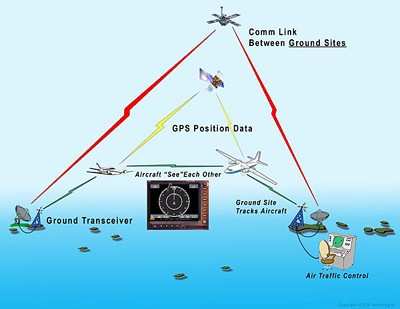
Myth: The current financing structure is stable and will be
sufficient to pay for NextGen.
Facts:
We do expect revenue to grow under the existing tax system.
However, the fact that revenue is projected to grow under the
current taxes really misses the point.
The Trust Fund is vulnerable. Revenue is subject to major swings
from year-to-year because of factors that are unrelated to the cost
of providing service. This makes long-term planning difficult, if
not impossible.
In addition, under the current system, FAA’s discretionary
spending must compete within the budget caps for all government
discretionary programs. Under the proposal, user fees would be
offsetting collections, not subject to the overall discretionary
spending caps. They could also be adjusted from year-to-year based
on needs.
In addition, the Administration’s proposal includes debt
financing to help accelerate the transition to NextGen. This would
not be possible under the current funding system.
A cost-based system, where users pay for the services they
utilize, is the best way to ensure a long-term, dependable funding
stream that can pay for NextGen.
 Myth: The proposal would
remove Congressional oversight.
Myth: The proposal would
remove Congressional oversight.
Facts:
Congress will retain annual budget approval authority and
ongoing oversight over the FAA. Under the Administration’s
proposal, all FAA funding — user fees, taxes, and the general
fund—would remain subject to Congressional
appropriations.
Myth: The proposal would give giant airlines a major tax break
that serves the wealthy.
Facts:
The proposal would reduce the tax burden on airlines and the
passengers who fly them. This is less a tax break for the airlines
than the elimination of a subsidy to general aviation.
Under the current system, a portion of the taxes that a
middle-class family pays to go on summer vacation or to visit the
relatives for the holidays is subsidizing the use of the system by
corporate jets and private individuals who are wealthy enough to
own their own aircraft.
Our proposal addresses this inequity in a way that will allow GA
to continue to thrive, while coming much closer to covering the
costs they drive in the aviation system.
Myth: User fees have been ineffective and have damaged aviation
around the world.
Facts:
 There are numerous examples
of successful user fee implementation throughout the rest of the
developed world, and it is clear that user fees have not damaged
aviation.
There are numerous examples
of successful user fee implementation throughout the rest of the
developed world, and it is clear that user fees have not damaged
aviation.
A January 2006 report by mbs Ottawa in conjunction with three
universities (“Air Traffic Control Commercialization Policy:
Has It Been Effective?”) evaluated ten countries that have
established user fees for air traffic control services: Australia,
Canada, France, Germany, Ireland, the Netherlands, New Zealand,
South Africa, Switzerland, and the United Kingdom.
The study found that the impact on “safety was neutral or
enhanced; modernization was greatly improved; and, service quality
was improved.”
It also found that “costs were generally reduced,
significantly in some models, while financial stability was
maintained, and most areas of public interest remained neutral or
positive when commercialized elements were introduced.”
In Canada, the fees NAV CANADA charges are more than 20 percent
lower than the taxes they replaced nearly a decade ago, and rates
are proposed to decrease by another 3 percent this year. In Europe,
a recent discussion paper by the European Commission notes that
business aviation in Europe has grown twice as quickly as the rest
of air traffic since 2001, and the European fleet of business
aircraft is projected to grow by 50 percent over the next ten
years.
Myth: The Administration proposal would destroy service to
small communities.
Facts:
Preservation of service to small communities was a key goal in
developing our proposal, and we anticipate that the financing
changes we are proposing should not destroy service to GA airports
or small communities. The proposed fuel tax would increase the
operating cost for an average GA airplane by approximately 3
percent.
Our proposal also protects service to small communities in
several other key ways. For instance, the general fund would pay
for towers at all airports with fewer than 100,000 commercial
enplanements, which includes all airports that qualify as rural
airports under the current tax code. For any commercial flights
using these airports (such as air taxis), there would be no
terminal user fees.
In addition, the AIP and PFC reforms will also benefit small
communities by increasing entitlements to large GA airports,
restructuring the small airport fund, and establishing a minimum
state apportionment of $300
million.
 Aero-News: Quote of the Day (04.28.25)
Aero-News: Quote of the Day (04.28.25) ANN's Daily Aero-Term (04.28.25): Decision Altitude (DA)
ANN's Daily Aero-Term (04.28.25): Decision Altitude (DA) ANN's Daily Aero-Linx (04.28.25)
ANN's Daily Aero-Linx (04.28.25) Airborne-Flight Training 04.24.25: GA Refocused, Seminole/Epic, WestJet v TFWP
Airborne-Flight Training 04.24.25: GA Refocused, Seminole/Epic, WestJet v TFWP Aero-News: Quote of the Day (04.29.25)
Aero-News: Quote of the Day (04.29.25)











